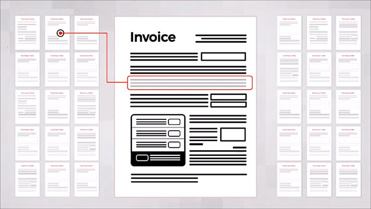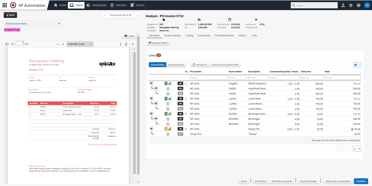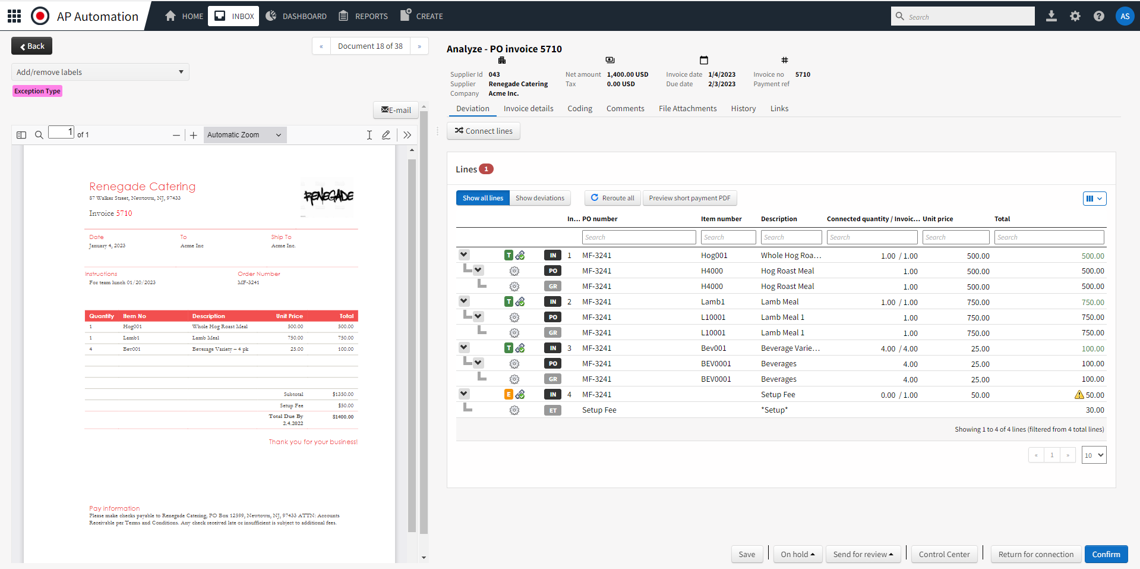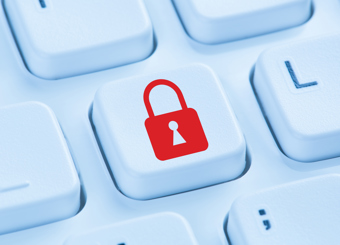What is a 3-way match versus a 2-way match?
- Accuracy in the invoice process
- 2-way match in accounts payable
- 3-way match in accounts payable
- How cloud AP automation simplifies 3-way and 2-way matching
- Benefits of cloud procure-to-pay automation
- The evolution of matching in accounts payable
- The role of artificial intelligence (AI) in enhancing invoice matching
Accuracy in the invoice process
AP professionals recognize the 3-way match and 2-way match are crucial to ensure accuracy in the purchase order invoice process. With that in mind, a 2-way match matches the invoice quantity and price to the purchase order and price. A 3-way match adds a goods receipt to ensure the company receives the same number ordered and invoiced. Consider the differences between a 2-way and 3-way match in accounts payable and how it impacts the bottom line.

What is a 2-way match in accounts payable?
The terms of an order are memorialized in a purchase order (PO) to show crucial information such as quantities, contracted cost, and when payment is due. Next, an invoice is received from a vendor to pay the goods or services outlined in the PO. Then the AP team compares the quantity and amount on the PO to the invoice, referred to as 2-way matching.
A 2-way match in accounts payable simply matches the PO to the PO invoice alone. This process does not refer to the packing slip or receipt typically sent with purchases. The purpose of 2-way matching is to verify the organization received the correct items or services at the contracted price. Handling this process manually requires time and human resources, and errors are likely to occur. AP automation ensures the highest level of accuracy in 2-way matching.
What is a 3-way match in accounts payable?
Clearly, 2-way matching leaves room for errors because the packing slips and receipts are not included in the process. In 3-way matching, the AP team matches the PO to the PO invoice and the packing slip or receipt to determine discrepancies. The primary reason for 3-way matching is to prevent inaccurate or fraudulent invoice payments by resolving mismatches before processing payments. However, there are advantages to both depending on the company, its size and systems, and its business relationships.
In most instances, 3-way matching is preferred to ensure the organization does not pay invoices until everything matches. The 3-way match saves companies from overspending, paying for something not received, and helping detect potential fraud. Cloud procure-to-pay automation handles matching quickly, efficiently, and without human intervention.
How does cloud AP automation simplify 3-way and 2-way matching?
Manual processing requires hours of human labor, delaying invoice payments and financial reports. Plus, the AP team must perform endless tedious work, and mistakes are inevitable. Partial automation minimally improves efficiency and leaves room for human error. However, cloud AP automation simplifies the 2-way and 3-way matching processes by eliminating human intervention. This is especially important in handling partial deliveries, which can cause delays if processed manually. Automated systems allow for flexible tolerance levels, ensuring that minor discrepancies in quantities or pricing are automatically processed without delay.
Cloud automation handles matching efficiently, accurately, and quickly in real-time for timely payments. Plus, the AP team focuses on more practical work, such as negotiating with vendors for discounts for early payments. As a result, automation saves time, money, and human resources while helping the organization avoid late payments and invoice fraud. Automated systems not only expedite the matching process but also flag any discrepancies instantly, reducing the risk of late payments and allowing the AP team to resolve issues efficiently. This strengthens vendor relationships by ensuring payments are made on time.
What are the benefits of cloud procure-to-pay automation?
Cloud procure-to-pay automation follows the invoice process from procurement to payment. One of the most significant benefits of AP automation is supporting remote work to keep organizations working in any circumstances - including global disasters. Consider some of the advantages of implementing AP automation solutions:
Establish and improve solid relationships between buyers and vendors.
Save money and time by verifying accuracy every step of the way.
Ensure compliance by streamlining audits with accurate records and detailed reports, simplifying audit processes in highly regulated industries like healthcare and manufacturing.
Attract top AP talent by supporting remote work and using advanced technology to save time, reduce fraud, and boost cost-efficiency.
Plus, companies improve their brand reputation by paying vendors on time and staying ahead of their production schedules. As a result, the C-suite realizes a continued ROI for implementing AP automation.
Understanding a 3-way match versus a 2-way match is crucial for AP team members to process payments accurately. However, inefficient manual processes lead to costly mistakes and are late.
The evolution of matching in accounts payable
The process of matching in accounts payable has evolved from simple manual comparisons to sophisticated automated systems that drastically improve efficiency and accuracy. In its earliest days, AP teams manually matched purchase orders to invoices in what is now known as 2-way matching. This method helped verify quantities and prices but still left room for errors, such as receiving goods that didn’t align with what was ordered. As businesses grew more complex, the need for a more thorough process led to the development of 3-way matching, which added the goods receipt to ensure that companies only paid for goods they actually received.

The rise of automation in the 2000s brought significant improvements to the matching process. Early automation systems reduced the time spent on manual reviews and allowed AP teams to focus on exceptions rather than routine tasks. Today, cloud-based procure-to-pay solutions can automatically handle both 2-way and 3-way matching, flagging any discrepancies for review and processing clean matches without human intervention.
As technology continues to evolve, AP automation is no longer just about efficiency and accuracy. New developments, particularly in artificial intelligence (AI), are reshaping the way businesses approach invoice matching and fraud prevention.
The role of artificial intelligence (AI) in enhancing invoice matching
AI technology is rapidly reshaping the landscape of accounts payable (AP), particularly when it comes to improving invoice matching processes. Traditional 2-way and 3-way matching have always been essential for ensuring accuracy, but AI takes this a step further by automating more complex tasks and catching errors that might otherwise go unnoticed.
AI speeds up the process and increases efficiency by adjusting tolerance levels intelligently. For example, if an invoice falls within a predefined tolerance for minor variations, AI can approve it automatically, further reducing delays. This dynamic adjustment helps minimize manual interventions and ensures smoother workflows.
In addition to improving accuracy and speed, AI plays a crucial role in fraud prevention. By analyzing patterns across a company's procurement and payment data, AI can detect unusual activities, such as repeated mismatches with certain vendors or sudden changes in pricing. These insights allow AP teams to address potential fraud before it becomes a costly issue. Ultimately, integrating AI into AP automation enables businesses to streamline their invoice matching processes, reduce errors, and strengthen financial controls. With fewer manual interventions and enhanced fraud detection, companies can maintain accurate financial records and focus on building stronger relationships with their vendors.
Medius offers a comprehensive AI-powered AP automation solution that takes these benefits a step further. By automating complex tasks, detecting fraud early, and improving overall efficiency, Medius helps businesses take full control of their accounts payable process.

Ready to transform your AP processes?
Book a demo today to see how Medius can enhance your AP automation and drive better financial outcomes for your organization.
You might also like:
Are outdated processes holding you back?
Accounts payable staff are on the front line of business change and often are tasked to implement cash flow policy changes in near real time. In many ways, AP has become the control tower for managing spend within the organization. However, many of them are stuck with legacy tools and outdated processes, creating massive inefficiencies. The real promise of AI and machine learning within accounts payable is not just streamlining processes but eliminating them.
This report from SSON explores how AP automation of today is evolving to become autonomous AP of tomorrow.








